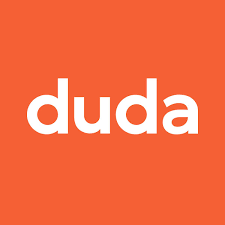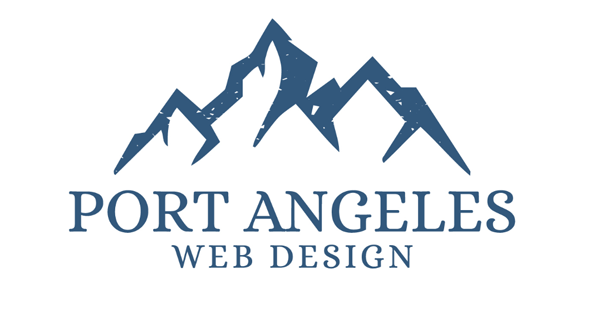Useful Articles

Search engines are constantly evolving, and one of the most debated topics in SEO is the influence of social media on search rankings. While Google has stated that social media metrics like likes and shares are not direct ranking factors, there’s no denying that social media activity can have a significant indirect impact on SEO. The question is: Are some social media connections more valuable to SEO than others? The short answer is yes. Not all social media platforms contribute to SEO in the same way. Some platforms are more authoritative, indexed more frequently, and capable of driving high-quality referral traffic. In this article, we’ll explore which social media connections offer the most value for SEO and how to leverage them for better search rankings. YouTube: A Powerhouse for Video SEO YouTube is owned by Google, making it one of the most influential platforms for SEO. Well-optimized videos can appear in both Google’s video search results and regular search listings. By incorporating keyword-rich titles, descriptions, and captions, you can enhance your website’s visibility. SEO Benefits: - YouTube videos rank in Google’s search results, providing an additional avenue for visibility. - Embedded YouTube videos can increase dwell time on your website, a positive user engagement signal. - Video content encourages backlinks and social shares, indirectly boosting domain authority. Twitter/X: Fast Indexing & Brand Mentions Twitter is one of the few social media platforms that Google indexes frequently. Tweets from authoritative accounts often appear in Google search results, making Twitter an effective tool for amplifying content reach. SEO Benefits: - Tweets appear in search engine results, increasing visibility for trending topics and branded searches. - Twitter encourages brand mentions, which can lead to natural backlinks from other sources. - Sharing high-quality content can drive referral traffic and encourage organic link-building. 3. Pinterest: Image SEO & Long-Term Traffic Pinterest is often overlooked in SEO discussions, but it is a powerhouse for driving organic traffic, especially in visual niches like fashion, food, travel, and home decor. Pins can rank in Google image searches and continue driving traffic for months or even years after they are posted. SEO Benefits: - Pins and boards get indexed by Google, providing additional opportunities for search visibility. - Keyword-rich descriptions help improve rankings in both Pinterest and Google searches. - High engagement on Pinterest can lead to more inbound links from blogs and websites. 4. Reddit & Quora: Niche Authority & Referral Traffic Both Reddit and Quora offer opportunities to position yourself as an industry expert while driving targeted traffic to your website. While links from these platforms are typically nofollow, their impact on SEO goes beyond link value. SEO Benefits: - Well-received answers and discussions can appear in Google search results, increasing your content’s reach. - A strong presence on these platforms can build brand authority and encourage organic backlinks from other sources. - Referral traffic from niche communities tends to be highly engaged, reducing bounce rates and improving on-site metrics. 5. Facebook & Instagram: Brand Awareness & Engagement While Facebook and Instagram are less directly tied to SEO, they still play a role in overall digital marketing success. Posts on these platforms aren’t typically indexed by Google, but they help with brand discovery, social sharing, and audience engagement. SEO Benefits: - Strong social engagement can lead to more website visits and increased branded search queries. - Viral content can attract media attention and backlinks from other websites. - Social proof and user engagement contribute to trust and authority, indirectly boosting SEO. Maximizing Social Media for SEO Success To make the most of your social media connections for SEO, follow these best practices: - Share high-quality content** that is valuable, shareable, and engaging. - Optimize your social media profiles** with relevant keywords, descriptions, and links to your website. - Encourage social sharing** to increase content reach and the likelihood of earning backlinks. - Use social media to amplify new content**, driving initial traffic and engagement that can lead to organic ranking improvements. - Engage with industry influencers and communities** to increase visibility and credibility. Not all social media connections are created equal when it comes to SEO. **YouTube, Twitter, Pinterest, and Reddit** offer the strongest indirect SEO benefits by driving traffic, encouraging backlinks, and increasing content visibility in search results. However, a well-rounded social media strategy that includes brand-building on platforms like Facebook and Instagram can still contribute to overall online authority. By leveraging the right social media channels strategically, you can enhance your SEO efforts, drive more organic traffic, and establish your brand as an industry leader. Social media and SEO go hand in hand—so make sure you're using both to their full potential!

The Google Index process refers to how Google collects, organizes, and stores information from web pages to make it accessible through search results. The purpose of this process is to enable Google Search to quickly retrieve relevant information in response to user queries. The process involves several key steps: 1. Crawling Definition: Google uses automated bots called "Googlebots" to discover new or updated web pages by following links on the web. Purpose: To find as much content as possible, ensuring the search index remains comprehensive and up-to-date. How it works: Googlebot begins with a list of known URLs (from previous crawls or sitemaps) and discovers new pages by following links from these. 2. Rendering Definition: After crawling, Google processes the HTML, JavaScript, CSS, and other elements to see how the page would appear to a typical user. Purpose: To understand the layout, design, and content as users would experience it. How it works: Google uses headless browsers (like Chrome) to simulate how the page renders, ensuring it can read dynamic or JavaScript-generated content. 3. Indexing Definition: Google analyzes the content and structure of crawled pages and organizes the data for storage in its massive index. Purpose: To make content searchable by categorizing it based on topics, keywords, and other signals. What Google stores: Text content Meta tags (e.g., titles, descriptions) Structured data (e.g., schema markup) Images and videos (if applicable) 4. Ranking Definition: When a user searches, Google retrieves information from its index and ranks results based on relevance and quality. Purpose: To deliver the most accurate and helpful answers to users. Factors considered: Keywords in the content Page quality and authority User experience metrics (e.g., page speed, mobile-friendliness) Backlinks and site reputation Purpose of the Google Index Efficiency: By pre-organizing data, Google can retrieve results almost instantly when a query is made. Relevance: The index helps ensure that users get the most pertinent results based on their search intent. Scalability: The index allows Google to handle billions of searches daily across an enormous volume of web content. The Google Index process is essential for organizing the internet’s vast amount of information, making it searchable, and ensuring users find relevant, high-quality results efficiently.

Modern web design has undergone significant transformations in recent years, with several key changes reshaping the digital landscape. These changes reflect evolving user expectations, technological advancements, and design trends. Here are some of the biggest design changes in modern web design: Responsive Design: One of the most significant shifts has been towards responsive design. With the proliferation of mobile devices, websites must adapt seamlessly to various screen sizes and resolutions. Responsive design ensures optimal viewing experiences across desktops, tablets, and smartphones, improving accessibility and user engagement. Minimalist Aesthetics: Clean, minimalist design has become increasingly popular. This approach emphasizes simplicity, with a focus on clear typography, ample white space, and minimalist navigation menus. Minimalist aesthetics enhance user focus, readability, and visual appeal while reducing clutter and distractions. Typography Emphasis: Typography plays a crucial role in modern web design. Designers are experimenting with bold, expressive typography to create memorable brand identities and enhance content hierarchy. Custom fonts, variable fonts, and creative typography treatments are gaining traction, adding personality and character to websites. Microinteractions: Microinteractions are subtle, interactive elements that enhance user experience and engagement. From hover animations and button feedback to scroll-triggered effects, microinteractions add depth and interactivity, making websites more intuitive and enjoyable to navigate. Accessibility Focus: Designers are placing greater emphasis on accessibility, ensuring that websites are inclusive and user-friendly for people with disabilities. This includes implementing accessible color contrasts, keyboard navigation support, screen reader compatibility, and other accessibility best practices to improve usability for all users. Illustrations and Animations: Visual storytelling through illustrations and animations has gained momentum in modern web design. Custom illustrations and animated graphics add personality, convey brand messages, and create immersive experiences that captivate and engage users. Scroll-based Navigation: Long-scrolling websites with scroll-based navigation have become prevalent, offering seamless transitions between sections and enhancing storytelling capabilities. Scroll-triggered animations, parallax effects, and fixed headers optimize the scrolling experience, making content more engaging and interactive. Video Backgrounds: Incorporating video backgrounds has become a popular design trend, adding dynamic visual elements that capture attention and convey brand narratives effectively. Video backgrounds can create immersive experiences, set the tone for websites, and increase user engagement. User-Centric Design: Overall, modern web design is increasingly focused on user-centric principles. Designers prioritize user experience (UX) research, usability testing, and iterative design processes to create intuitive, enjoyable, and meaningful digital experiences that resonate with users and drive results. These design changes reflect the dynamic nature of web design, driven by technological innovation, user behavior trends, and evolving design aesthetics. Embracing these trends and best practices can help designers create impactful and user-friendly websites in today's digital landscape.

High-quality content on a website refers to content that is valuable, relevant, accurate, and engaging for the target audience. It is content that serves the purpose of meeting the needs, interests, and expectations of visitors while also aligning with the goals and objectives of the website owner. Here's a detailed explanation of what constitutes high-quality content: Relevance : High-quality content is directly relevant to the audience it serves. It addresses topics, questions, and concerns that are pertinent to the target audience's interests, needs, and pain points. Understanding your audience and their motivations is crucial for creating relevant content that resonates with them. Accuracy and Credibility : High-quality content is accurate, reliable, and backed by credible sources whenever possible. It is factually correct and free from errors, misleading information, or outdated data. Providing accurate information helps build trust and credibility with your audience. Value-Driven : High-quality content provides value to the audience by offering useful insights, actionable tips, practical advice, or entertaining stories. It educates, informs, inspires, or entertains the audience, helping them solve problems, make informed decisions, or achieve their goals. Uniqueness and Originality : High-quality content is original and stands out from the crowd. It offers a unique perspective, fresh ideas, or innovative solutions that differentiate it from similar content available elsewhere. Original content helps capture the attention of the audience and establishes your authority in your niche. Clarity and Readability : High-quality content is easy to understand, well-organized, and presented in a clear and concise manner. It uses plain language, avoids jargon or overly technical terms, and breaks down complex concepts into digestible chunks. Clear and readable content ensures that the audience can quickly grasp the message and absorb the information presented. Engagement Potential : High-quality content is engaging and captures the audience's attention from the outset. It sparks curiosity, evokes emotions, or prompts action, encouraging visitors to explore further, share the content with others, or interact with the website in meaningful ways. Engaging content may include storytelling, interactive elements, multimedia assets, or compelling visuals. Search Engine Optimization (SEO) : High-quality content is optimized for search engines to improve visibility and ranking in search results. It incorporates relevant keywords, meta tags, and descriptive titles and headings to make it easier for search engines to understand and index the content. SEO-friendly content helps attract organic traffic and increase the website's online presence. Overall, high-quality content is the cornerstone of a successful website. It serves as the bridge between the website owner and the audience, fostering meaningful connections, driving engagement, and ultimately contributing to the achievement of business goals and objectives.

In today's digital age, creating content that truly resonates with your audience is essential for building a loyal following and driving engagement on your website, blog, or social media channels. Value-driven content goes beyond mere information-sharing; it provides actionable insights, practical advice, and inspiring stories that enrich the lives of your audience members. In this blog post, we'll explore how to create value-driven content that educates, informs, inspires, and entertains your audience while helping them solve problems and achieve their goals. Understand Your Audience Before you start creating content, it's crucial to understand your audience's needs, preferences, and pain points. Conduct audience research, gather feedback, and analyze data to gain insights into what matters most to your target audience. What are their challenges? What questions do they have? What are their aspirations and goals? By understanding your audience deeply, you can tailor your content to address their specific needs and interests. Provide Actionable Tips and Practical Advice One of the hallmarks of value-driven content is its practicality. Offer actionable tips, step-by-step guides, and practical advice that your audience can implement in their lives or businesses right away. Whether it's a tutorial on mastering a new skill, a checklist for improving productivity, or a recipe for a healthy meal, make sure your content provides tangible value and helps your audience achieve real results. Tell Inspiring Stories Storytelling is a powerful tool for connecting with your audience on an emotional level and inspiring them to take action. Share personal anecdotes, case studies, or success stories that illustrate key concepts or lessons. Use storytelling to humanize your brand, showcase your expertise, and demonstrate how your products or services have made a positive impact on people's lives. Inspiring stories have the ability to captivate and motivate your audience, making your content more memorable and impactful. Educate and Inform In today's information-saturated world, people crave knowledge and insights that can help them navigate complex issues and make informed decisions. Position yourself as a trusted authority in your niche by creating content that educates and informs your audience. Dive deep into topics relevant to your industry or area of expertise, provide in-depth analysis and commentary, and offer valuable resources and recommendations that empower your audience to expand their knowledge and skills. Entertain and Delight While providing valuable information is important, don't forget the power of entertainment in capturing and holding your audience's attention. Incorporate elements of humor, storytelling, or visual appeal to make your content more engaging and enjoyable to consume. Infuse your content with personality and authenticity, and don't be afraid to inject a bit of fun or levity into your messaging. By entertaining and delighting your audience, you create a positive and memorable experience that keeps them coming back for more. Creating value-driven content is the key to building meaningful connections with your audience and driving long-term engagement and loyalty. By understanding your audience, providing actionable tips and practical advice, telling inspiring stories, educating and informing, and entertaining and delighting your audience, you can create content that truly resonates and adds value to their lives. So, roll up your sleeves, get creative, and start crafting content that makes a difference! Remember, the more value you provide to your audience, the more they'll appreciate and engage with your content, ultimately leading to greater success for your brand or business.

In today's digital landscape, capturing and maintaining visitors' attention on your website is essential for driving conversions and achieving your business goals. To effectively engage visitors and encourage interaction, it's crucial to implement strategic design and content elements. In this blog post, we'll explore five key strategies that can help you boost website engagement and interaction, ultimately enhancing the user experience and driving meaningful outcomes. 1. Clear and Compelling Content: Engaging visitors starts with providing clear, compelling content that immediately communicates your value proposition. Utilize attention-grabbing headlines, concise copy, and impactful visuals to capture visitors' interest and encourage further exploration. Focus on addressing visitors' needs and pain points to establish relevance and build trust from the outset. 2. Intuitive Navigation and User Experience (UX): Seamless navigation and a positive user experience are fundamental to keeping visitors engaged on your website. Design intuitive navigation menus, incorporate breadcrumbs, and optimize page layouts to help users find the information they seek quickly and easily. Prioritize mobile responsiveness and accessibility features to ensure a consistent and inclusive experience across all devices and user scenarios. 3. Engaging Visual Design: Visual design plays a pivotal role in captivating visitors and conveying your brand's identity and message effectively. Choose a visually appealing color palette, use high-quality images and graphics, and leverage whitespace to create a clean and inviting layout. Strive for visual harmony and coherence throughout your website to enhance readability and user engagement. 4. Interactive and Multimedia Elements: Incorporating interactive elements and multimedia content can significantly enhance user engagement and interaction on your website. Consider adding interactive features such as quizzes, polls, and surveys to encourage active participation from visitors. Integrate multimedia content like videos, animations, and slideshows to provide dynamic and engaging experiences that resonate with your audience and keep them invested in your content. 5. Clear Calls-to-Action (CTAs) and Conversion Paths: Clear calls-to-action (CTAs) are essential for guiding visitors towards desired actions and conversions on your website. Strategically place compelling CTAs throughout your site to prompt visitors to take specific actions, whether it's making a purchase, subscribing to a newsletter, or contacting you for more information. Design intuitive conversion paths that lead visitors through the sales funnel, providing them with relevant information and opportunities to engage at every stage of their journey. If you are like most small business owners, you do not have the time, nor expertise to properly adress these yourself. That's where I come in. My website and design services include implementing these five key strategies, that create a website that not only attracts visitors but also keeps them engaged and motivated to interact with your content. I'll continuously monitor and analyze user behavior to identify areas for improvement and optimization. By prioritizing user engagement and interaction, we can enhance the overall user experience and drive meaningful results for your business.

Many small business owners the need for a web designer, thinking they can do it themselves. Free websites may seem like a deal, but are you willing to risk your company's reputation on the cheapest option? Your website is often the first thing potential customers see. Does it accurately represent your business and entice customers, or does it make them seek alternatives? Without the skills, knowledge, and experience of professional web designers, a DIY website could harm your business and brand, costing you thousands in lost business. Web design is a complex job best left to professionals. Instead of spending weeks on your website, focus on growing your business. Below are five crucial reasons why you need to consider hiring a professional web designer to create and maintain your website: Tailored Design: A professional web designer will create a website that is unique to your brand and tailored to your specific needs and goals. They will take into account your brand identity, target audience, and overall business objectives to ensure that your website effectively represents your business. User Experience: A professional web designer has the expertise to optimize your website for a seamless user experience. They will pay attention to factors such as navigation, page loading speed, and mobile responsiveness, which are crucial for keeping visitors engaged and converting them into customers. Custom Functionality: A professional web designer can incorporate custom functionalities into your website to enhance its performance and meet your specific business requirements. From e-commerce features to integrations with third-party applications, a professional web designer can make your website work harder for your business. Search Engine Optimization (SEO): A professional web designer understands the importance of optimizing your website for search engines. They will implement best practices for on-page SEO, ensuring that your website ranks higher in search results and attracts more organic traffic. Ongoing Support and Maintenance: A professional web designer provides ongoing support and maintenance to keep your website running smoothly. They will monitor the performance of your website, update software and plugins, and make necessary adjustments to ensure that your website remains secure and up-to-date. This level of ongoing care is essential for the long-term success of your website and business.


